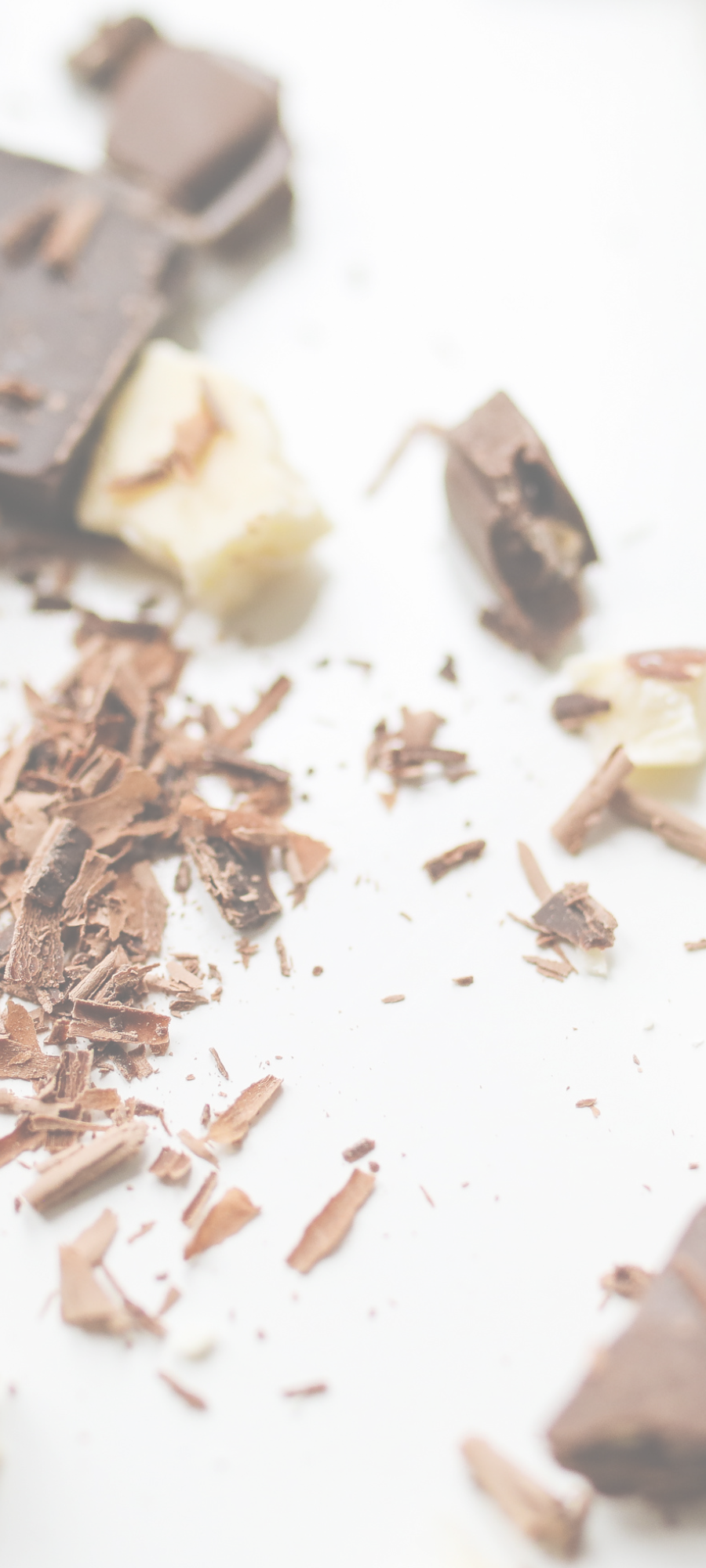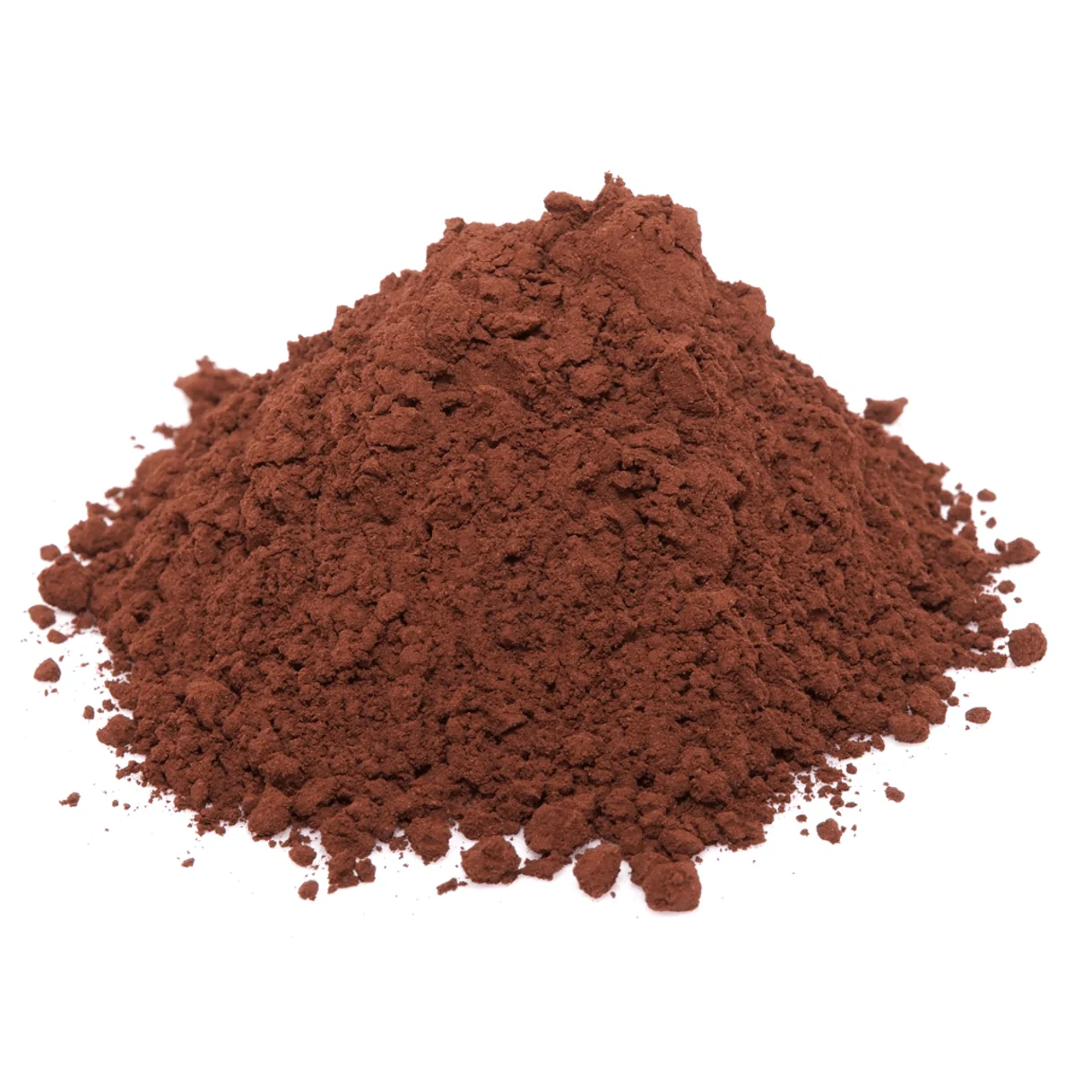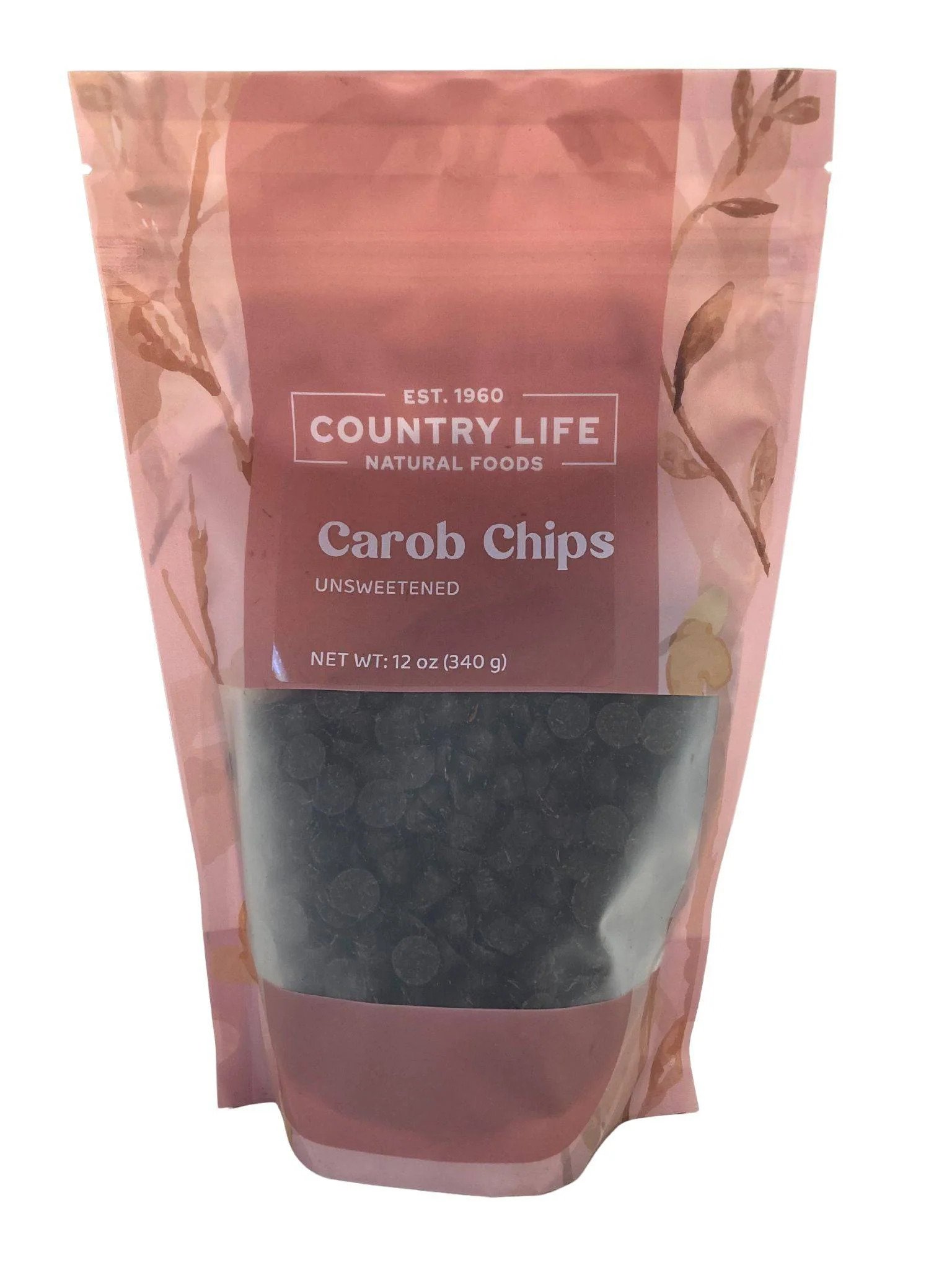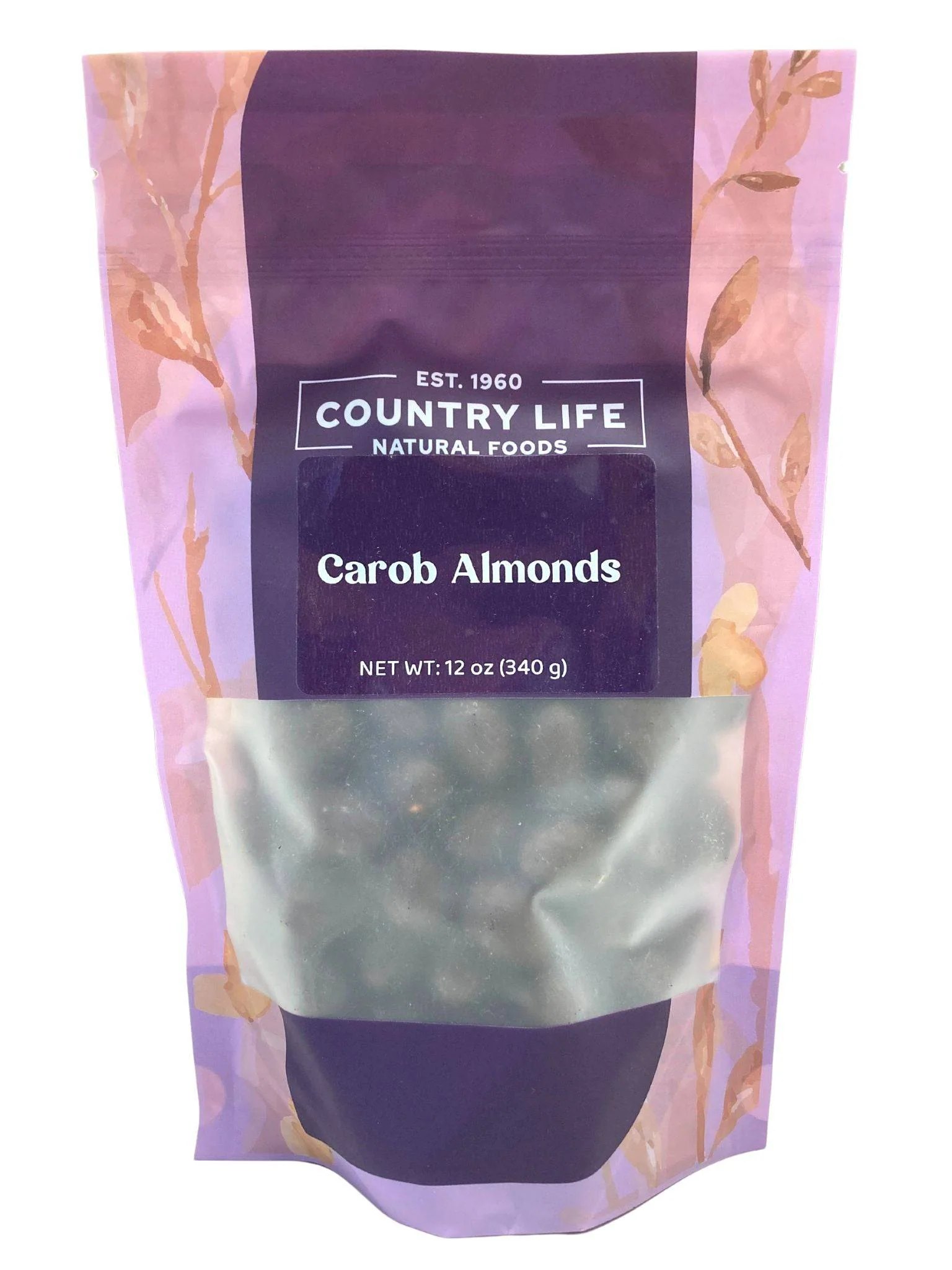To Carob or To Chocolate?
FIND OUT WHICH ONE IS BEST FOR YOU!
Although carob and chocolate seem very similar at first glance, they are quite different. Each offering their own unique nutritional and taste profile.
To compare carob vs chocolate and which is better for you, it's more of a comparison between carob and cocoa (the secret sauce behind chocolate).
So, grab your carob chips and discover how carob vs. chocolate differs when it comes to taste, nutrients, sugar, carbs, calories, fat, fiber, and those cheeky stimulants that keep us buzzing.
We'll also share some of our favorite carob products!
key takeaways
-v1753089193420.jpg?1200x2700)
A quick glance at carob vs chocolate:
- Flavor Profile: Cocoa delivers a rich, complex taste, often with bitter undertones, while carob is naturally sweeter, nuttier, and milder—though it doesn’t quite replicate “luxurious” chocolate flavor.
- Sugar & Carbohydrates: Raw cocoa powder has 16 g carbs and 0 g sugar per ounce, while carob powder has 25 g carbs and 14 g sugar per ounce.
- Stimulants & Caffeine: Cocoa contains caffeine and theobromine (plus oxalic acid), which may affect sleep, heart rate, or mineral absorption. Carob is stimulant-free, making it ideal for those avoiding caffeine.
- Antioxidants: Both offer antioxidants, but cocoa is superior.
- Calories: Both powders are low in calories, making them suitable for moderate use.
- Fat Content: Pure cocoa powder has about 4 g fat per ounce (and chocolate even more), while carob powder has virtually none.
- Fiber: Cocoa powder offers 4.8 g of fiber per ounce, and carob provides 11 g—beneficial for digestion and blood sugar regulation.
These insights highlight that carob and cocoa each shine differently! The choice between them depends on your taste preferences, nutritional goals, and sensitivity to caffeine.
Continue reading to learn more about carob vs. chocolate to help you decide which is best for you!
CAROB VS. CHOCOLATE
THE DIFFERENCE IN FLAVOR
Carob and chocolate both have distinct taste profiles and are not similar in taste. You may be surprised or deeply disappointed (sorry!) when you expect carob to be an exact replacement for your guilty pleasure, chocolate.
COCOA (AND CHOCOLATE)
Cocoa has an intense, round flavor but is very bitter if not mixed with sweeteners. Not what we're after!
CAROB
Carob's taste is naturally sweeter, with a slightly nutty taste, and less bitter than cocoa. It does, however, not have that luxurious taste of chocolate.
The winner: This is up to you, but carob gets our vote 'cause it is naturally sweeter.
MINERALS & NUTRIENTS
COCOA
Cocoa is higher in magnesium, iron, copper, manganese, and phosphorus.
Two tablespoons of cocoa provide 1.6 milligrams of iron and 409 micrograms of copper. In contrast, carob contains a mere 0.4 milligrams of iron and 69 micrograms of copper.
Two tablespoons of cocoa also provide 81 milligrams of magnesium and 80 milligrams of phosphorus. In contrast, carob provides only 6 milligrams of magnesium and 9 milligrams of phosphorus.
CAROB
Carob is, however, higher in folate and calcium; it contains about three times more calcium than cocoa.
Both contain other essential vitamins, like vitamins A and B.
THE WINNER: Cocoa, because we want all the minerals we can get!


SUGAR & CARBOHYDRATES
Ooh, these are the biggies most people worry about. Another distinctive difference between carob and chocolate is the carbohydrate and sugar content.
COCOA
Cocoa powder contains 16 grams of carbohydrates and 0 grams of sugar per ounce.
CAROB
Powdered carob contains 25 grams of carbohydrates and 14 grams of sugar per ounce.
However, you won't eat plain carob or cocoa powder, right? That's just not tasty at all... So this comparison will come down to the added ingredients that will alter the sugar and carbohydrate content.
A chocolate bar may contain sugar and milk to offset its bitter taste. And carob-coated nuts may contain loads of added fat to mimic the richness of chocolate. It's imperative to carefully examine the labels to compare them.
THE WINNER: Looking at the sugar and carbohydrate content in its raw state, cocoa wins.
STIMULANTS & CAFFEINE
One of the most crucial differences between carob and chocolate or cocoa is the stimulants they contain and their caffeine content. You know, those that keep us jittery and awake!
COCOA
Cocoa and chocolate contain caffeine and theobromine, which are stimulants and can become addictive. Some people can be very sensitive to these and experience headaches, jitters, poor sleep quality, and acne.
Chocolate also contains oxalic acid, which can inhibit mineral absorption and cause kidney stones.
CAROB
Carob contains no caffeine, theobromine, oxalic acid, or other stimulants. This makes it a fantastic alternative for people with heart rate, sleep, or blood pressure problems.
THE WINNER: If caffeine makes you go a bit crazy, carob is the way to go!
ANTIOXIDANT PROPERTIES
Both carob and cacao can boast about having high antioxidant content. The two main bioactive plant antioxidant compounds are polyphenols and flavonoids. Antioxidants are crucial for neutralizing oxygen-based free radicals and toxins in your body.
However, cocoa seems to take the cake (no pun intended). According to Cornell University food scientists, a cup of hot cocoa has up to three times the antioxidants found in a cup of green tea.
THE WINNER: Cocoa beats carob in this category.
CALORIES
Carob and cocoa powder both contain approximately 25 calories in 2-tablespoon servings.
They can both be enjoyed in a balanced diet, as they make up less than 2 percent of your daily calorie intake if you follow a standard 2,000-calorie diet. We like the sound of that!
THE WINNER: The low calories in both options make them both winners!
FAT CONTENT
COCOA
1 Ounce of pure cacao powder contains 4 grams of fat, while 1 ounce of unsweetened chocolate contains 15 grams.
CAROB
1 Ounce of pure carob powder contains 0 fat.
Carefully examine the labels, as both carob and cacao/chocolate products can contain hydrogenated, refined fats. The best is to buy raw carob or chocolate powders and make your own treats at home to avoid refined fats and added sugars. Yes, homemade for the win!
THE WINNER: Carob in its pure form is great if you follow a low-fat diet.
FIBER CONTENT
Both carob and cocoa are excellent sources of dietary fiber that can help with constipation, regulate blood sugar levels, and lower cholesterol.
COCOA
1 ounce of cocoa powder provides around 4.8 grams of fiber.
CAROB
1 ounce of carob powder provides around 11 grams of fiber.
Carob is great if you have digestive issues, as carob's tannins dry the digestive tract, helping tackle toxins and preventing harmful bacterial growth in the intestines.
THE WINNER: Definitely carob, because we can all do with a little bit of extra fiber, right?

carob vs. chocolate - so which is better?

Looking at our comparison above, it is a win for carob with a score of 5 to 4. But only because of the naturally sweet taste of carob. The pros and cons of both make it a tie.
Both offer unique benefits and drawbacks, and both are okay for enjoying as a sweet treat. Remember, this is the case when they are minimally processed and can significantly change depending on the other ingredients used.
The sensitivity to caffeine and theobromine will also be a deciding factor.
Also, dark chocolate may be better if you're watching carbs. And if you're trying to cut back on fat, carob is the healthier choice.
When trying to eat healthily and cut out excess fat or sugar, you'll want to look at the ingredients of any sweet treat. Always carefully read any chocolate or carob product's ingredients and nutritional content lists.
Carob and cocoa both have their place, and it will come down to personal preference and the need to avoid stimulants.
Just know that carob may not please everyone's taste buds. Instead, view it as a unique alternative rather than expecting carob to replace your beloved chocolate.
OUR FAVORITE CAROB PRODUCTS
If you are looking for something to satisfy your sugar cravings, carob will do the trick as it is naturally sweet. You could sweeten it even more with stevia, if you wish.
In any recipe, you can replace cocoa powder or chocolate with a carob replacement in a one-to-one ratio to still enjoy your favorites like fudge, cake, chocolate milkshakes, cookies, and brownies.
If you want to gradually get used to the taste of carob or keep the rich taste of chocolate, swap out 50% of the cocoa with a suitable carob replacement, i.e., powder or chips.
SHOP CAROB PRODUCTS HERE
 POWDERED CAROB |  UNSWEETENED CAROB CHIPS |  CAROB COATED ALMONDS |
 CAROB COATED PEANUTS |  CAROB COATED RAISINS |  CAROB BRIDGE MIX |


-v1653312595673.png?1800x1000)

-v1688385426060.png?1800x1000)
-v1653312692603.png?1800x1000)


